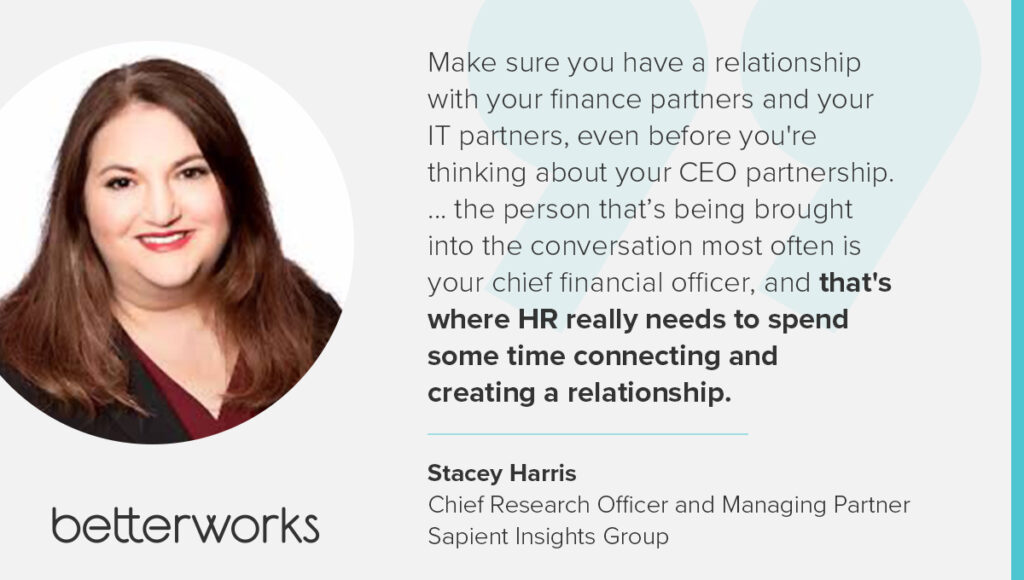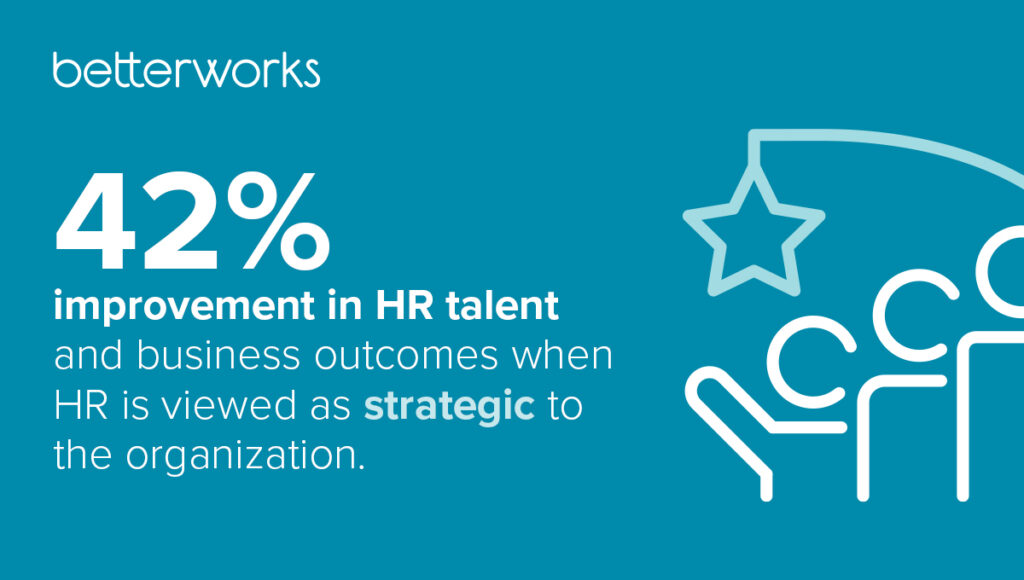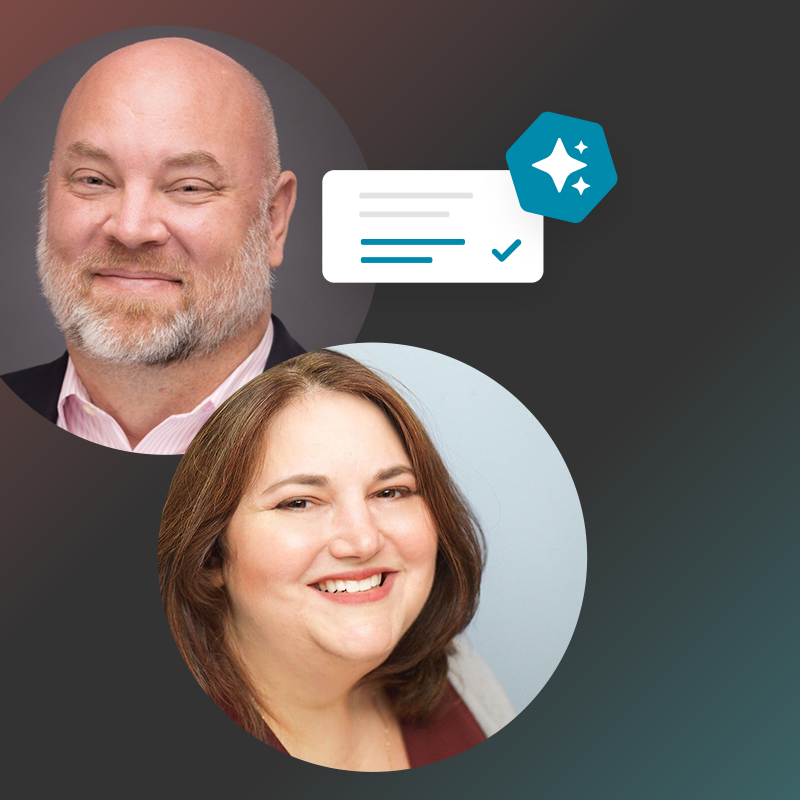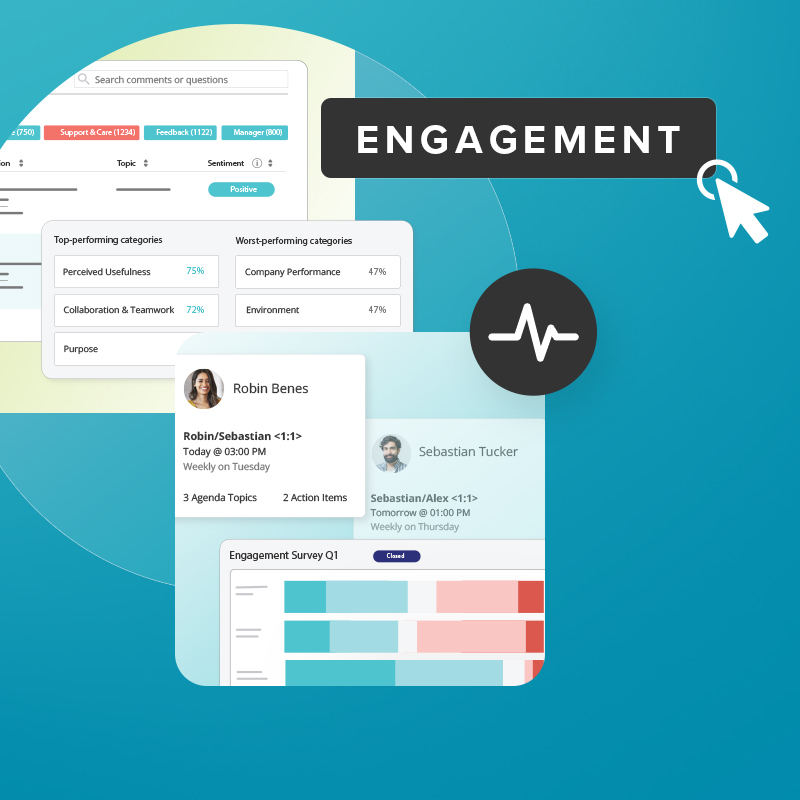AI is no longer a side experiment for HR. It’s reshaping workforce skills, technology investments, and HR’s role in business strategy. The biggest question is how HR can drive AI adoption without losing trust, widening skill gaps, or losing touch with business priorities.
The Betterworks People Fundamentals webinar, The State of HR Technology and the AI Imperative, shared highlights and exclusive findings from Sapient Insights Group’s 2024-2025 HR Systems Survey. Stacey Harris, chief research officer and managing partner at Sapient Insights Group, and Cliff Stevenson, director of research and principal analyst, revealed where AI adoption stands today, which business priorities are shaping HR tech decisions, and how leaders can prepare their organizations for an AI-enabled future.
The message is clear: HR teams must assess the economic forces reshaping talent, build partnerships across the enterprise, and design technology ecosystems that make AI work for people, not the other way around.
Understand AI’s effects on the economy and jobs
The AI imperative is much bigger than just technology. As Stacey pointed out, “Our business leaders are facing global labor issues and new AI-driven skill requirements.”
The job market is changing rapidly: Healthcare, manufacturing, and skilled trades roles are in short supply, while white-collar roles are being redefined by automation. The World Economic Forum projects that 92 million jobs will be displaced by AI this decade. But simultaneously, there will also be 170 million new jobs. “So that is really going to leave us about 78 million jobs to fill with an already declining workforce,” Stacey said.
This looming talent shortage is compounded by falling workforce participation rates and shifting educational requirements. Many of the fastest-growing roles, from solar installers to nurses, aren’t part of the typical AI conversation but are critical to business continuity.
Meanwhile, Sapient’s survey results reveal that across organizations of all sizes, the top two priorities for 2025 are increasing revenue and improving efficiency. For companies with more than 5,000 employees, the third-highest priority is digital transformation. For midsized companies, it’s boosting employee engagement.
The lesson: Companies of all sizes are trying to be more efficient, cut costs, and chase AI — a combination that threatens employee engagement and puts pressure on HR leaders as they navigate this rapidly changing environment.
If you’re not aware of these priorities, you can’t align HR strategy with business needs. Stacey urges HR leaders at all levels to “know the world you are living in, understand the economics and the availability of the workforces that are important to your business and your organization.”
Strengthen relationships that enable AI success
For HR leaders to drive AI adoption, they need meaningful partnerships across functions. “Make sure you have a relationship with your finance partners and your IT partners, even before you’re thinking about your CEO partnership,” Stacey says.
Because AI success starts with secure, well-structured, and well-governed data, the “relationship between HR and IT becomes paramount,” Cliff says. Without these two functions working closely, companies will struggle to obtain accurate and meaningful results from AI.
The finance function, meanwhile, often views HR as a compliance function rather than a strategic partner. That’s a problem, Stacey says, when “the person that’s being brought into the conversation most often is your chief financial officer, and that’s where HR really needs to spend some time connecting and creating a relationship.”

These relationships aren’t just nice to have. They’re tied to business outcomes. When HR is viewed as strategic by the rest of the organization, organizations average “42% higher levels of improved HR talent and business outcomes. When we look at just business numbers, that jumps to about 11% year over year,” Stacey says.
These partnerships also influence HR technology budgets. Stacey reports a 30% increase in IT owning HR tech budget in large enterprises. No matter who owns the budget, HR leaders must remain closely involved in decisions about systems, integration, and data governance to protect their strategic influence.
“When we’re viewed as strategic, there are conversations we can have, there are things we can do to make things move faster, and that’s really what you want to do with the AI market,” Stacey adds.

Build an HR tech model that supports AI integration
AI adoption in HR is growing. The Sapient Insight survey shows that 45% of large enterprises have embedded AI in HR processes, up from 43% last year. Many others are experimenting or evaluating. The biggest area of growth is in AI agents for HR service delivery, where 150% growth is expected over the next 12 months.
Employee adoption is even higher. The survey found that over 70% of HR professionals are using AI in their work, but only one-third do so with company-paid tools. This unauthorized usage raises major concerns around governance, security, and ethical oversight — all areas where HR can and should lead. “If you’re tracking an employee at any level in your organization, you should be tracking your AI just as much,” Stacey says.
Perhaps the most significant opportunity for HR is hyper-personalization across the employee experience — tailoring communication, support, and learning to each employee’s needs. Again, HR must build the foundation before applying AI. Hyper-personalization works best when organizations have “skills and job definitions, data management models, ethics models, real employee trust, and willingness to evolve,” Stacey says.
Underpinning HR’s AI efforts is a connected technology ecosystem and clean, reliable data. Stacey highlights the trend toward platform clusters, identifying an anchor system, and connecting a tightly integrated set of solutions. As Cliff explains, the goal is ensuring that “systems talk to each other in a way that is conducive to driving business success.”
The future of HR tech and AI isn’t about chasing the newest tools. It’s about creating the systems, partnerships, and culture that make HR a trusted, strategic force for employees and the business.
To hear all of Stacy and Cliff’s insights, watch the webinar on demand.
HR’s role in building AI-forward companies



